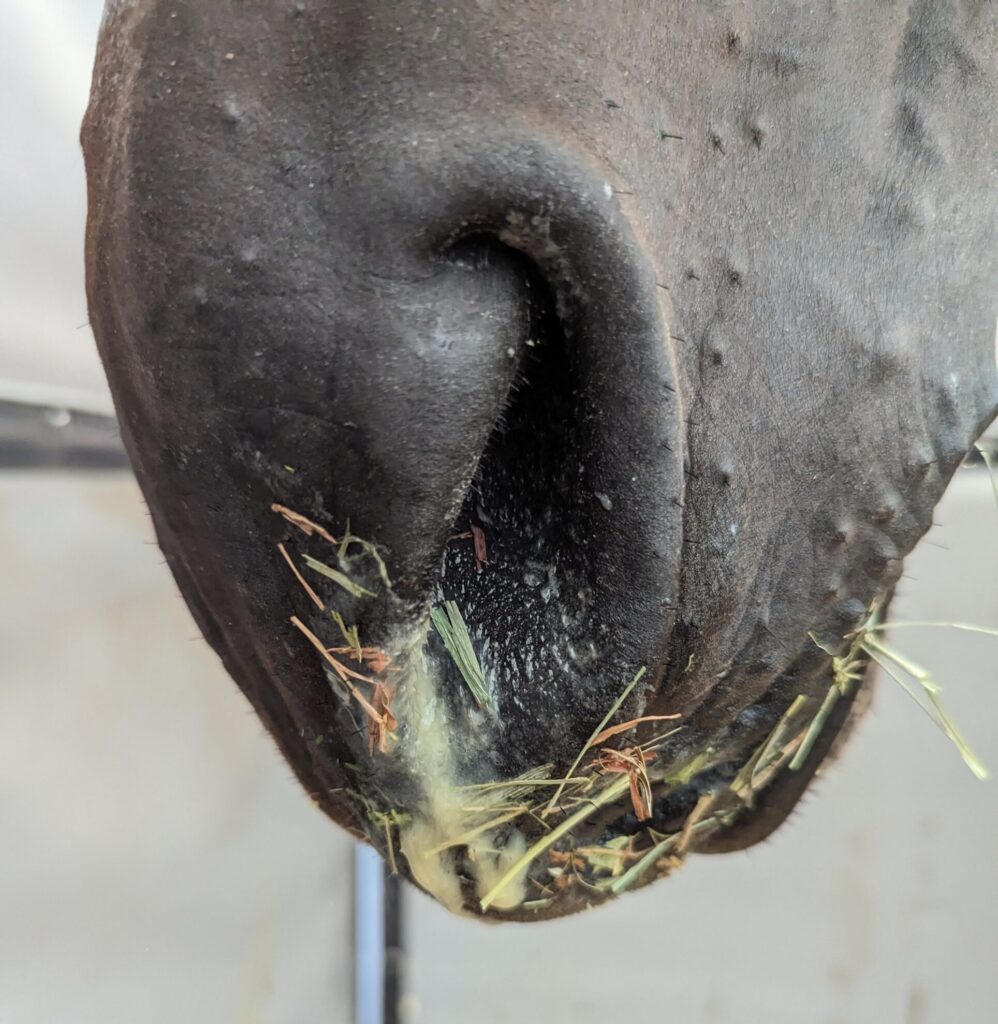Story Time
We got a call the other day claiming a gelding had a leg injury. The description given was, “the horse doesn’t walk normal; the leg has obvious inflammation.” We arrive at the farm and take a look at the patient in the stall. As the horse walks over to the stall front, it’s clearly lame at the walk due to the very swollen left front. The horse is taken out of its stall for a better look. After further examination we can see that the swelling encompasses almost the entire left front limb– from the pastern to almost the elbow. The limb is very warm compared to the opposite leg and painful to touch. After checking the temperature and seeing that it’s 103.6⁰F, the vet delivers the bad news: it’s an infection.
Commonly Confused
It’s quite common for people to confuse inflammation for infection. However, the two are distinctly different, and one could be the cause of the other under the right circumstances. Inflammation by itself does not always mean there is an infection. With an infection, the body uses inflammation to help fight off whatever it deems a threat.
So, What Is Inflammation?
According to the 2022 Merck Veterinary Manual, inflammation is a complex response to some type of injury, and its job is to immobilize the injury so that a repair of the damaged area can occur. Depending on the injury, healing could be a couple days long or several months to a year. Inflammation is characterized by: heat, swelling, pain, redness and loss of function.
How Does Inflammation Help the Body Heal?
Inflammation does a couple things. Not only does it bring more blood to the affected area – which makes it swollen, warmer and appear more red – it also makes the area painful. When dealing with an injury, pain is protective. If something hurts, the animal will do its best to lessen the pain, often by not using the affected area or limb. This ensures that the injury won’t be worsened, and it also keeps the injury somewhat immobilized, allowing for faster healing.
Some Examples of Inflammation
I think anyone who works with horses can say that their foot has been stepped on at some point! Hopefully nothing was broken, but you find out very quickly that your toes start to turn red, swell up and are really painful when you walk. Or maybe you’re out all day in the sun and forgot to wear a hat or apply sunscreen. Later that night you notice how red your skin looks, it also feels hot to the touch, and your skin feels tight when you move. All signs of inflammation.

Here’s an example of inflammation due to an injury. This horse’s right front leg has a slight bow along the soft tissue running down the back of the leg. There is a new injury to one of the structures, and, because of this, there is localized inflammation.
OK, So What’s an Infection?
Sometimes foreign microorganisms—fungus, bacteria, viruses or parasites—invade the body, multiply and cause illness. How does this happen? The horse could have eaten something that was contaminated; it could have caught something from an already infected animal; or there was an injury somewhere on the skin, leaving the delicate tissue underneath exposed to foreign microbes. Regardless of how it got inside, once the body recognizes the foreign intruder, it launches an immune response. One of these responses is inflammation.
Other Signs of Infection
Love it or hate it, pus is a giant red flag for infection. Pus is a buildup of dead white blood cells, the body’s fighting force. It’s an indication that many WBC have been fighting something and died in the process. We see them as they are being expelled from the body as pus. Here are a few examples of pus that most horse people have seen: thick white or yellow snot coming from one or both nostrils, a thick yellowish drip coming from a cut, and the horrible smelling whitish liquid oozing from an abscessed hoof.
Fevers
I often think that people confuse infection and inflammation because of fevers. In both instances, heat is used to heal the body. But, as Annika Bram, current DVM candidate at UC Davis (California) and fellow HorseGroom contributor explains, “A high body temperature is a supportive mechanism to help fight off the pathogens as it creates an environment that is less favorable to their growth and replication.” A fever is the body’s attempt to cook the pathogen to death. So, while localized inflammation could just be an injury, a fever is a red flag for an infection. This is why it is so important to know how to take and read your horse’s temperature!
Obvious vs Not So Obvious
Strangles is a good example of a very easy to spot bacterial infection. Infected horses have snotty noses and can develop large abscesses under their jaw that often drain, leaving a stinky mess but also a huge risk of transmission to other horses. Be aware, however, that many infections aren’t so easy to spot. Eastern Equine Encephalitis, or EEE, has no obvious outward signs of infection like a snotty nose or a hot and swollen leg. This viral infection is in the brain and brainstem. Symptoms of this infection include high fever, lack of appetite, staggering, blindness and seizures. In many instances, the first sign of an infection that you would notice is change in behavior.

When in Doubt…Call your Vet
Circling back to our farm call. Although many grooms might be relieved to hear that their horse isn’t injured, having an infection as an alternative isn’t much better–and in some cases, it could be fatal. Bram stresses that, “An infection is more dangerous than inflammation…a fever warrants an immediate call to the vet.” The most dangerous things our horses come into contact with daily would be the microorganisms that cause infections. As much as we wish our horses could talk and tell us what’s wrong, we have to be diligent and keep a sharp eye on their bodies and behavior. Knowing what’s considered normal for a particular horse is so important. Knowing how to take vital signs on a horse is a good tool to help you decide how urgent the situation is. Pro tip: Pictures and videos sent to your vet highlighting your area of concern are quick ways to get a better read on the situation.
Takeaways
Remember: inflammation by itself is used to heal some sort of injury; there is heat and swelling at that specific location because blood is flooding the area. An infection will raise the animal’s body temperature–a fever–to try and kill off the pathogen. We often see the body using inflammation during an infection in an effort to speed up healing and fight off the pathogen, i.e. abscessed hoof.
What Not to Do
Please don’t start your horse on any antibiotics without first consulting your vet. It could prolong the horse’s infection and make matters much worse, like an antibiotic resistant infection! Not all infections can be treated with the same antibiotic; many require specific antibiotics to fight off the infection. Don’t piss off your vet by starting antibiotics without first consulting them!


